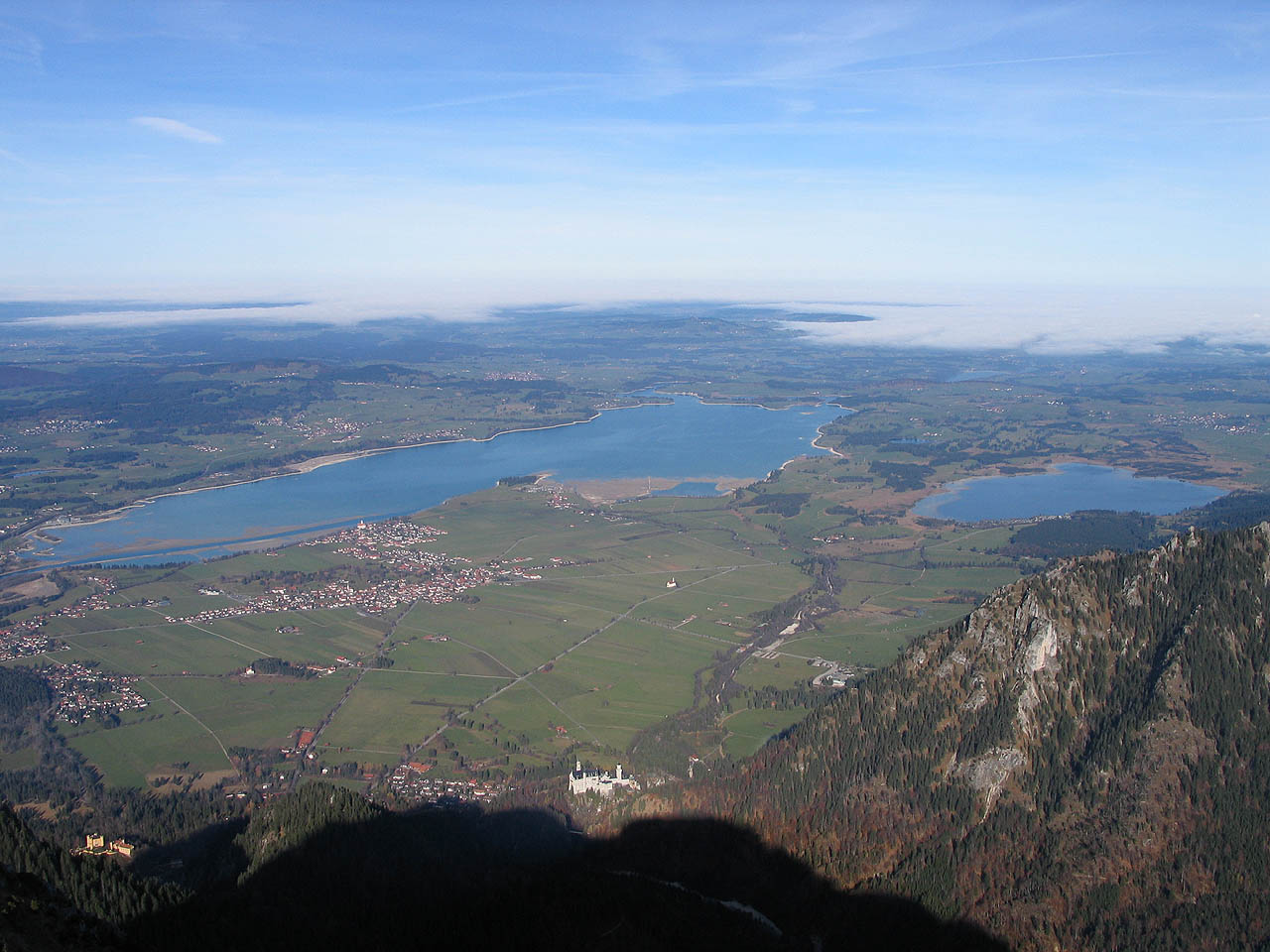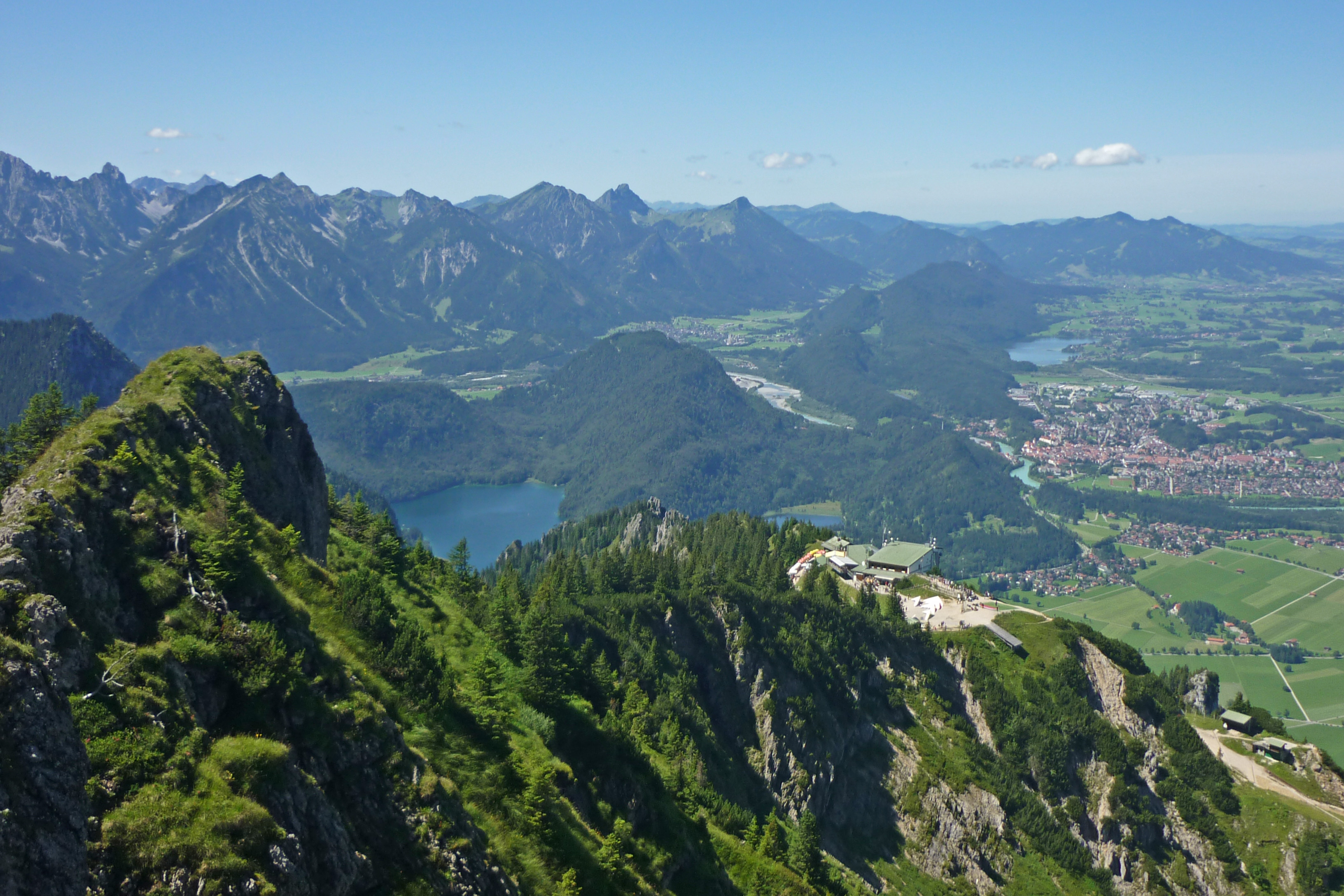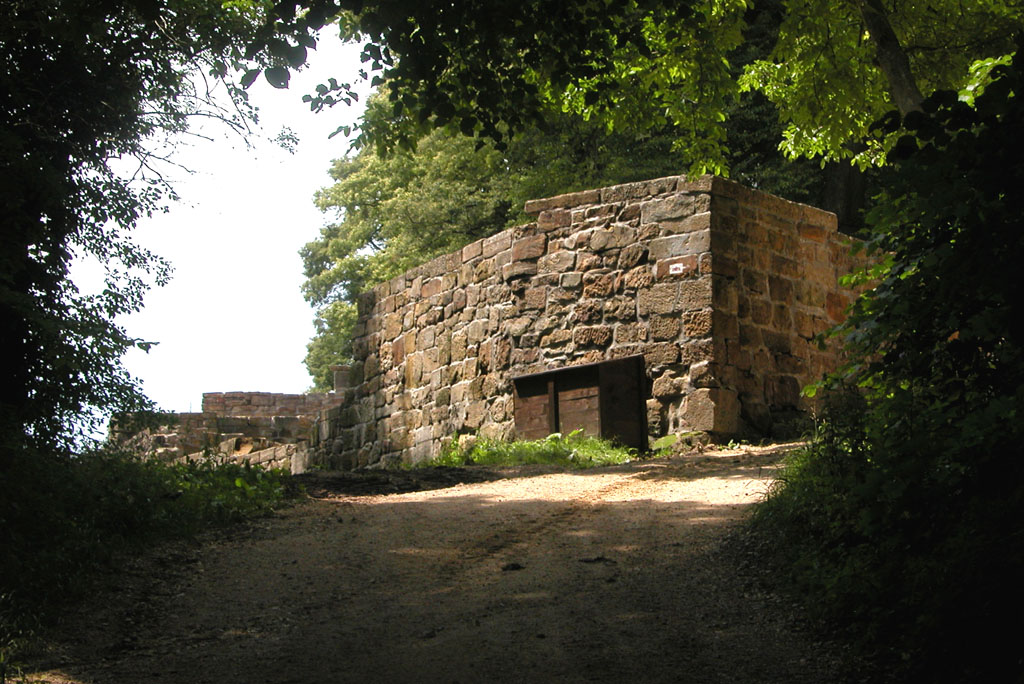|
Schwangau
Schwangau is a municipality in the district of Ostallgäu in Bavaria, Germany. The village lies 4 km from the larger town of Füssen and just 1.5 km from Hohenschwangau, a collection of tourist-oriented facilities adjacent to the major tourist attractions of Schloss Neuschwanstein and Schloss Hohenschwangau. Schwangau has no railway station, but is served by buses connecting to Füssen, Hohenschwangau, and other nearby Alpine towns. It is the next-to-last town on the Romantic Road tourist route that terminates in Füssen. A ''castrum Swangowe'' is attested in 1090. It was situated on the site of Neuschwanstein Castle and was owned by the Elder House of Welf. After the death of Welf VI in 1191, it fell to the Staufer dynasty, and in 1268 to the empire. The modern coat of arms is based on the one shown in the Codex Manesse as that of Hiltbolt of Schwangau (d. 1256), gules, a swan argent. In the USA, the name "Swango" can be found. Presumably the name is descended fro ... [...More Info...] [...Related Items...] OR: [Wikipedia] [Google] [Baidu] |
Schloss Hohenschwangau
Hohenschwangau Castle (german: Schloss Hohenschwangau) is a 19th-century palace in southern Germany. It was the childhood residence of King Ludwig II of Bavaria and was built by his father, King Maximilian II of Bavaria. It is located in the German village of Hohenschwangau near the town of Füssen, part of the county of Ostallgäu in southwestern Bavaria, Germany, very close to the border with Austria. History The fortress ''Schwangau'' (literally translated ''the Swan District''), which was first mentioned in historical records dating from the 12th Century, stood high up on a rock on the site of the present 19th-century Neuschwanstein castle. The knights, later counts of Schwangau, were ministeriales of the Welfs. Hiltbolt von Schwangau (1195–1254) was a Minnesang, minnesinger. Margareta von Schwangau was the wife of minnesinger Oswald von Wolkenstein. The present day Hohenschwangau ("Upper Schwangau") castle was first mentioned in 1397, though under the name of ''Schwan ... [...More Info...] [...Related Items...] OR: [Wikipedia] [Google] [Baidu] |
Neuschwanstein
Neuschwanstein Castle (german: Schloss Neuschwanstein, , Southern Bavarian: ''Schloss Neischwanstoa'') is a 19th-century historicist palace on a rugged hill above the village of Hohenschwangau near Füssen in southwest Bavaria, Germany. The palace was commissioned by King Ludwig II of Bavaria as a retreat and in honour of Richard Wagner. Ludwig chose to pay for the palace out of his personal fortune and by means of extensive borrowing, rather than Bavarian public funds. Construction began in 1869, but was never fully completed. The castle was intended as a private residence for the King, until he died in 1886. It was open to the public shortly after his death. Since then more than 61 million people have visited Neuschwanstein Castle. More than 1.3 million people visit annually, with as many as 6,000 per day in the summer. Location The municipality of Schwangau lies at an elevation of at the southwest border of the German state of Bavaria. Its surroundings are charact ... [...More Info...] [...Related Items...] OR: [Wikipedia] [Google] [Baidu] |
Neuschwanstein Castle
Neuschwanstein Castle (german: Schloss Neuschwanstein, , Southern Bavarian: ''Schloss Neischwanstoa'') is a 19th-century historicist palace on a rugged hill above the village of Hohenschwangau near Füssen in southwest Bavaria, Germany. The palace was commissioned by King Ludwig II of Bavaria as a retreat and in honour of Richard Wagner. Ludwig chose to pay for the palace out of his personal fortune and by means of extensive borrowing, rather than Bavarian public funds. Construction began in 1869, but was never fully completed. The castle was intended as a private residence for the King, until he died in 1886. It was open to the public shortly after his death. Since then more than 61 million people have visited Neuschwanstein Castle. More than 1.3 million people visit annually, with as many as 6,000 per day in the summer. Location The municipality of Schwangau lies at an elevation of at the southwest border of the German state of Bavaria. Its surroundings are char ... [...More Info...] [...Related Items...] OR: [Wikipedia] [Google] [Baidu] |
Romantic Road
The Romantic Road (german: Romantische Straße) is a "theme route" devised by promotion-minded travel agents in the 1950s. It describes the of surface roads between Würzburg and Füssen in southern Germany, specifically in Bavaria and Baden-Württemberg, linking a number of picturesque towns and castles. In medieval times, part of it was a trade route that connected the center of Germany with the south. Today, this region is thought by many international travellers to possess "quintessentially German" scenery and culture, in towns and cities such as Nördlingen, Dinkelsbühl and Rothenburg ob der Tauber and in castles such as Burg Harburg and the famous Neuschwanstein. With about five million overnight stays, four to five times that number of day visits and around 15,000 tourist jobs generated by the route, it is an economically important southern German travel destination.Erwin Seitz, Dominik Rossmann: ''Fallstudien zum Tourismus-Marketing: Marketing-Erfolg trainieren.'' Vah ... [...More Info...] [...Related Items...] OR: [Wikipedia] [Google] [Baidu] |
Hohenschwangau
Hohenschwangau is a former village and now an urban district of the municipality of Schwangau, Ostallgäu district, Bavaria, Germany. It is located between Schloss Neuschwanstein and Schloss Hohenschwangau and is visited by about 2 million people annually, where they start tours to the former royal palaces. The village is dominated by car parks, restaurants, guesthouses, hotels and souvenir A souvenir (), memento, keepsake, or token of remembrance is an object a person acquires for the memories the owner associates with it. A souvenir can be any object that can be collected or purchased and transported home by the traveler as a ... shops. Hohenschwangau is bordered by the Alpsee in the West. Here the ''Museum of the Bavarian Kings'' was established in 2011 in a former ancient hotel building (Alpseestraße 27). The actress and singer Helen Vita was born in Hohenschwangau. Julien Duvivier shot exterior scenes of one of his films, ''Marianne de ma jeunesse'', on the ... [...More Info...] [...Related Items...] OR: [Wikipedia] [Google] [Baidu] |
Ostallgäu
Ostallgäu is a ''Landkreis'' (district) in Swabia, Bavaria, Germany. It is bounded by (from the west and clockwise) the districts of Oberallgäu, Unterallgäu, Augsburg, Landsberg, Weilheim-Schongau and Garmisch-Partenkirchen, and by the Austrian state of Tyrol. The town of Kaufbeuren is enclosed by but does not belong to the district. History Before 1803 the region was split into several tiny states, most of them clerical states. When these states were dissolved in 1803, the Ostallgäu region became part of Bavaria. The kings of Bavaria soon developed a special relationship with the region and built their famous castles of Hohenschwangau and Neuschwanstein there. The district was established in 1972 by merging the former districts of Kaufbeuren, Marktoberdorf and Füssen. Geography "Ostallgäu" literally means "Eastern Allgäu". The term Allgäu is applied to the part of the Alps located in Swabia and their northern foothills. The district extends from the crest of ... [...More Info...] [...Related Items...] OR: [Wikipedia] [Google] [Baidu] |
Codex Manesse
The Codex Manesse (also Große Heidelberger Liederhandschrift or Pariser Handschrift) is a ''Liederhandschrift'' (manuscript containing songs), the single most comprehensive source of Middle High German ''Minnesang'' poetry, written and illustrated between c. 1304 when the main part was completed, and c. 1340 with the addenda. The codex was produced in Zürich, for the Manesse family. The manuscript is "the most beautifully illumined German manuscript in centuries"; its 137 miniatures are a series of "portraits" depicting each poet. Contents The Codex Manesse is an anthology of the works of a total of about 135 minnesingers of the mid 12th to early 14th century. For each poet, a portrait is shown, followed by the text of their works. The entries are ordered approximately by the social status of the poets, starting with the Holy Roman Emperor Henry VI, Kings Conradin and Wenceslaus II, down through dukes, counts and knights, to the commoners. Most of the poems are ''Minnesang ... [...More Info...] [...Related Items...] OR: [Wikipedia] [Google] [Baidu] |
Säuling
Säuling or Saulingspitze is a twin-peak mountain in the German Allgäu, though part of the mountain is in Austria. The two summits have heights of and . It is located near the town of Füssen and the castle Neuschwanstein Neuschwanstein Castle (german: Schloss Neuschwanstein, , Southern Bavarian: ''Schloss Neischwanstoa'') is a 19th-century historicist palace on a rugged hill above the village of Hohenschwangau near Füssen in southwest Bavaria, Germany. The .... External links Mountains of Bavaria Ammergau Alps Mountains of the Alps Two-thousanders of Germany {{Bavaria-geo-stub ... [...More Info...] [...Related Items...] OR: [Wikipedia] [Google] [Baidu] |
Tegelberg
Tegelberg is a mountain of Bavaria, Germany. It is a part of the Ammergau Alps. The nearest town is Füssen. Neuschwanstein Castle and Hohenschwangau Castle are about 2 km away. The Tegelberg has been a hang gliding area since the 1970s and a paragliding Paragliding is the recreational and competitive adventure sport of flying paragliders: lightweight, free-flying, foot-launched Glider (aircraft), glider aircraft with no rigid primary structure. The pilot sits in a :wikt:harness, harness o ... area since this adventure sport became popular in Germany. The FAI Hanggliding World Championship 1983 took place there. [...More Info...] [...Related Items...] OR: [Wikipedia] [Google] [Baidu] |
Staufer
The Hohenstaufen dynasty (, , ), also known as the Staufer, was a noble family of unclear origin that rose to rule the Duchy of Swabia from 1079, and to royal rule in the Holy Roman Empire during the Middle Ages from 1138 until 1254. The dynasty's most prominent rulers – Frederick I (1155), Henry VI (1191) and Frederick II (1220) – ascended the imperial throne and also reigned over Italy and Burgundy. The non-contemporary name of 'Hohenstaufen' is derived from the family's Hohenstaufen Castle on the Hohenstaufen mountain at the northern fringes of the Swabian Jura, near the town of Göppingen. Under Hohenstaufen rule, the Holy Roman Empire reached its greatest territorial extent from 1155 to 1268. Name The name Hohenstaufen was first used in the 14th century to distinguish the 'high' (''hohen'') conical hill named Staufen in the Swabian Jura (in the district of Göppingen) from the village of the same name in the valley below. The new name was only applied to the hill cas ... [...More Info...] [...Related Items...] OR: [Wikipedia] [Google] [Baidu] |
Welf VI
Welf VI (111515 December 1191) was the margrave of Tuscany (1152–1162) and duke of Spoleto (1152–1162), the third son of Henry IX, Duke of Bavaria, and a member of the illustrious family of the Welf. Biography Welf inherited the familial possessions in Swabia, including the counties of Altdorf and Ravensburg, while his eldest brother Henry the Proud received the duchies of Bavaria and Saxony and his elder brother Conrad entered the church. Henry married Welf to Uta, the daughter of Godfrey of Calw, count palatine of the Rhine. On Godfrey's death in 1131, a dispute opened up between Godfrey's nephew Adalbert and Welf over the inheritance of Calw. Welf was an uncle to the Emperor Frederick Barbarossa (Barbarossa's mother, Judith, was Welf's sister). Welf himself was only a decade or less older than his nephew, during whose reign most of Welf's activity occurred. When Conrad III of Germany, Frederick's uncle, confiscated the duchy of Bavaria in 1142, Welf joined his brothe ... [...More Info...] [...Related Items...] OR: [Wikipedia] [Google] [Baidu] |
Elder House Of Welf
An elder is someone with a degree of seniority or authority. Elder or elders may refer to: Positions Administrative * Elder (administrative title), a position of authority Cultural * North American Indigenous elder, a person who has and transmits cultural and philosophical knowledge * Australian Aboriginal elder, one who has gained recognition as a custodian of knowledge and lore, often a leader in administrative matters Religious * "The elder", author of the Johannine epistles 2 John and 3 John in the New Testament * Elder (Christianity), a person valued for their wisdom and, in some churches and denominations, holding an administrative or oversight role ** Elder (Methodist), an ordained minister with responsibilities to preach and teach ** Elder (Anglican), a learned minister with responsibilities to teach and/or innovate ** Elder (Latter Day Saints), a priesthood office in the Melchizedek priesthood * Thero or Elder, an honorific term for senior Buddhist nuns and ... [...More Info...] [...Related Items...] OR: [Wikipedia] [Google] [Baidu] |





